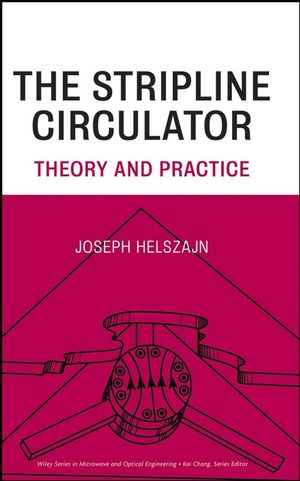The Stripline Circulator: Theory and PracticeISBN: 978-0-470-25878-1
Hardcover
608 pages
June 2008, Wiley-IEEE Press
 This is a Print-on-Demand title. It will be printed specifically to fill your order. Please allow an additional 10-15 days delivery time. The book is not returnable.
|
||||||
The stripline junction circulator is a unique three-port non-reciprocal microwave junction used to connect a single antenna to both a transmitter and a receiver. Its operation relies on the interaction between an electron spin in a suitably magnetized insulator with an alternating radio frequency magnetic field. In its simplest form, it consists of a microwave planar gyromagnetic resonator symmetrically coupled by three transmission lines.
This book explores the magnetic interaction involved in the stripline circulator's operation, the nature of the microwave resonator shape, and the network problem that arises in coupling the microwave resonator to the microwave circuit. The stripline circulator is an important device met across a wide range of industries, including wireless, military, radar, and satellite communications. The book's design tables are a unique feature, offering valuable design support.
Written by an international authority on non-reciprocal microwave circuits and devices, the book is organized into logical blocks of chapters that focus on specific effects and circuit aspects of the stripline circulator. Among the highlights of coverage are:
-
Spatial shape demagnetizing factors of magnetic insulators
-
Standing wave solutions of wye gyromagnetic planar resonators
-
Lumped element circulators
-
Negative permeability tracking and semi-tracking circulators
-
Four-port single-junction circulators
-
Fabrication of very weakly and weakly magnetized microstrip circulators
The final chapter explores important and continuing discrepancies between theoretical models and actual practice. For designers building circulators, isolators, and phase shifters; researchers working on the limitation of ferrite devices; and graduate students intending to work in the field, Dr. Helszajn's insights and perspectives are invaluable.



